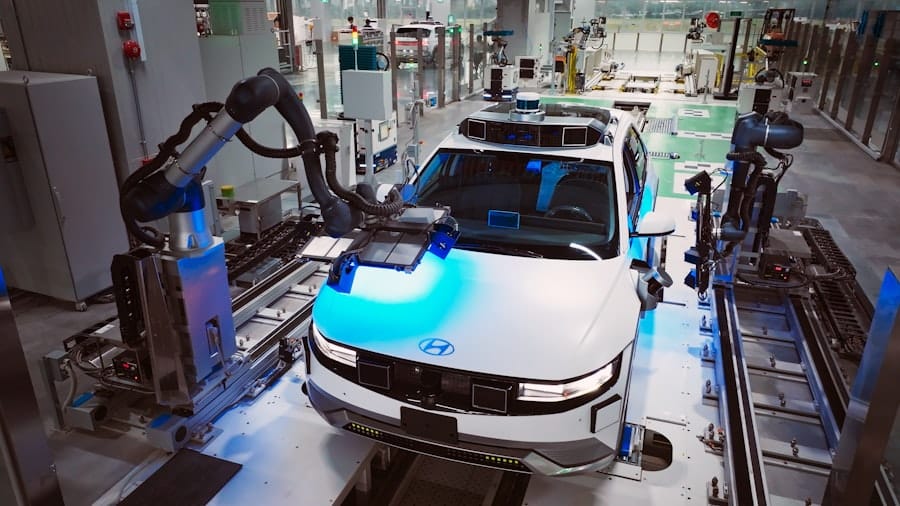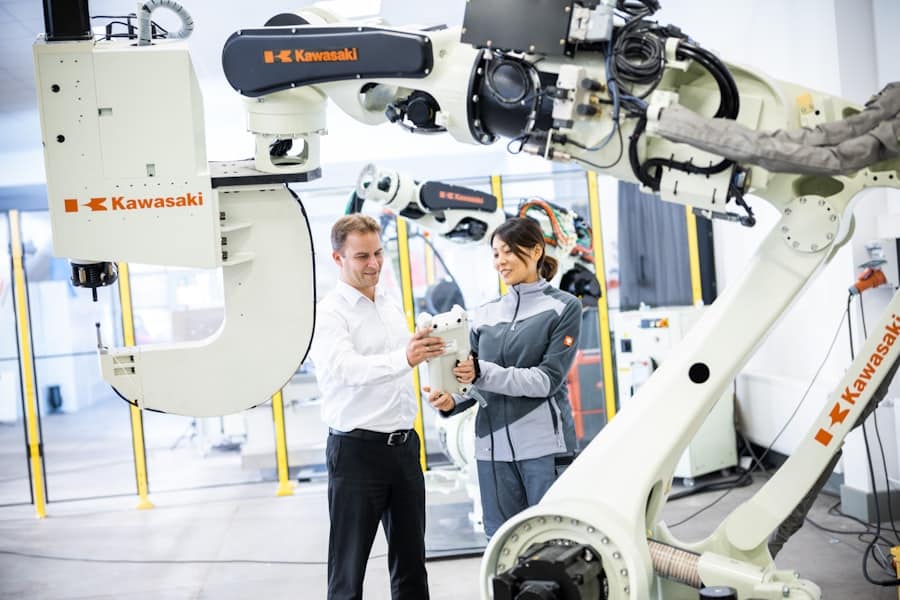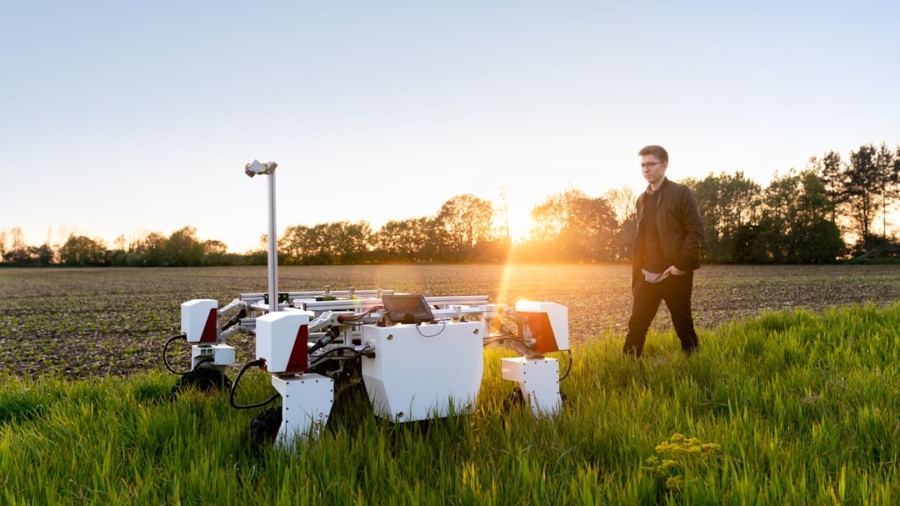The intersection of robotics and sustainable recycling represents a transformative frontier in waste management. As global populations swell and consumption patterns evolve, the volume of waste generated continues to escalate, placing immense pressure on existing recycling systems. Traditional methods of waste sorting and processing are often labor-intensive, inefficient, and prone to human error.
In this context, robotics emerges as a pivotal solution, offering enhanced precision, speed, and scalability. By integrating advanced robotic systems into recycling facilities, organizations can not only streamline operations but also contribute to a more sustainable future. Robotics in recycling encompasses a range of technologies, from automated sorting systems equipped with artificial intelligence (AI) to robotic arms capable of handling diverse materials.
These innovations are designed to address the complexities of modern waste streams, which include an increasing variety of materials that require careful separation and processing. The adoption of robotics in this sector is not merely a trend; it is a necessary evolution aimed at improving the efficiency and effectiveness of recycling efforts worldwide. As we delve deeper into the impact of robotics on waste management, it becomes clear that these technologies hold the potential to revolutionize how we approach recycling.
Key Takeaways
- Robotics in sustainable recycling is revolutionizing the waste management industry by improving efficiency and quality of recycling processes.
- The impact of robotics on waste sorting and processing includes increased accuracy, speed, and safety, leading to higher recycling rates and reduced contamination.
- Advancements in robotic technology for recycling facilities include the use of AI, machine learning, and advanced sensors to enhance sorting capabilities and reduce human intervention.
- Robotics play a crucial role in improving recycling efficiency and quality by automating repetitive tasks, reducing labor costs, and increasing the recovery of valuable materials.
- Challenges and limitations of robotics in sustainable recycling include high initial investment costs, limited adaptability to different waste streams, and the need for ongoing maintenance and technical support.
The Impact of Robotics on Waste Sorting and Processing
The integration of robotics into waste sorting and processing has fundamentally altered the landscape of recycling operations. Traditional sorting methods often rely on manual labor, which can be slow and inconsistent.
For instance, optical sorting machines equipped with cameras can detect different types of plastics based on their color and composition, allowing for precise separation before they enter the recycling stream. This level of accuracy not only enhances the quality of recycled materials but also reduces contamination rates, which is a significant challenge in recycling. Moreover, robotics can significantly increase the throughput of recycling facilities.
Automated systems can operate continuously without the fatigue that human workers experience, leading to higher processing rates. For example, a robotic sorting system can process thousands of items per hour, far surpassing the capabilities of manual sorting teams. This increased efficiency translates into cost savings for recycling facilities, as they can handle larger volumes of waste without proportionally increasing labor costs.
Advancements in Robotic Technology for Recycling Facilities

Recent advancements in robotic technology have propelled the capabilities of recycling facilities to new heights. One notable development is the use of artificial intelligence in robotic systems, which allows machines to learn from their environment and improve their sorting accuracy over time. Machine learning algorithms can analyze vast amounts of data from previous sorting operations to refine their decision-making processes.
This adaptability is crucial in an industry where waste streams are constantly evolving due to changes in consumer behavior and product design. Another significant advancement is the development of collaborative robots, or cobots, which are designed to work alongside human workers rather than replace them. These robots can assist in tasks that require precision or repetitive motion while allowing human operators to focus on more complex decision-making processes.
For instance, cobots can handle the initial sorting of materials before humans intervene to make final decisions on quality control. This synergy between human intelligence and robotic efficiency creates a more dynamic and effective recycling operation.
The Role of Robotics in Improving Recycling Efficiency and Quality
Robotics plays a crucial role in enhancing both the efficiency and quality of recycling processes. By automating sorting tasks, facilities can achieve higher levels of accuracy in material separation, which is essential for producing high-quality recycled products. For example, when plastics are sorted correctly, they can be reprocessed into new products without significant degradation in quality.
This is particularly important for industries that rely on recycled materials, such as packaging and automotive manufacturing. Furthermore, robotics can help optimize the entire recycling workflow by integrating with other technologies such as data analytics and IoT (Internet of Things) devices. By collecting real-time data on material flows and processing rates, facilities can identify bottlenecks and inefficiencies in their operations.
This data-driven approach enables managers to make informed decisions about resource allocation and process improvements. As a result, recycling facilities can not only increase their output but also enhance the overall quality of the materials they produce.
Challenges and Limitations of Robotics in Sustainable Recycling
Despite the numerous advantages that robotics brings to sustainable recycling, several challenges and limitations must be addressed for widespread adoption. One significant hurdle is the initial investment required for implementing robotic systems. The cost of advanced sorting technologies can be prohibitive for smaller recycling facilities or those operating on tight budgets.
While the long-term savings from increased efficiency may justify the upfront costs, many organizations may struggle to secure funding for such investments. Another challenge lies in the complexity of waste streams themselves. While robotics excels at sorting homogeneous materials, mixed waste streams present difficulties that current technologies may not fully address.
For instance, items that are heavily contaminated or composed of multiple materials can confuse robotic systems, leading to errors in sorting. Additionally, the rapid pace of innovation means that facilities must continually update their technologies to keep up with advancements in robotics and AI. This ongoing need for investment in training and equipment can strain resources for many organizations.
Case Studies of Successful Implementation of Robotics in Recycling

Several case studies illustrate the successful implementation of robotics in recycling facilities around the world. One notable example is the use of robotic arms at AMP Robotics, a company specializing in AI-driven sorting solutions. Their systems have been deployed in various recycling centers across North America, where they have demonstrated remarkable efficiency in identifying and sorting recyclable materials from mixed waste streams.
In one facility, AMP’s robots increased sorting accuracy by over 20%, significantly reducing contamination rates and improving the quality of recycled output. Another compelling case is found in Europe, where several countries have embraced robotic technology to enhance their recycling efforts. In Sweden, for instance, a facility implemented a combination of robotic arms and AI-powered vision systems to automate the sorting process for plastics and metals.
The results were impressive: the facility reported a 30% increase in processing capacity while simultaneously improving the purity of sorted materials. These case studies highlight not only the effectiveness of robotics in improving recycling operations but also serve as models for other facilities looking to adopt similar technologies.
Future Outlook for Robotics in Sustainable Recycling
The future outlook for robotics in sustainable recycling is promising as technological advancements continue to evolve at a rapid pace. As AI algorithms become more sophisticated, we can expect even greater improvements in sorting accuracy and efficiency. The integration of machine learning with robotics will enable systems to adapt dynamically to changing waste streams, allowing for more effective processing regardless of material composition.
Moreover, as public awareness around sustainability grows, there will likely be increased investment in recycling infrastructure that incorporates advanced technologies like robotics. Governments and private enterprises are recognizing the importance of sustainable practices not only for environmental reasons but also for economic viability. This shift could lead to broader adoption of robotic systems across various regions and sectors, ultimately contributing to a more circular economy where materials are reused rather than discarded.
The Potential of Robotics to Revolutionize Recycling Practices
The potential for robotics to revolutionize recycling practices cannot be overstated. By enhancing efficiency, accuracy, and safety within recycling facilities, these technologies are poised to address some of the most pressing challenges facing waste management today. As we continue to innovate and refine these systems, it is essential to foster collaboration between technology developers, recycling operators, and policymakers to ensure that advancements are accessible and beneficial across all sectors.
In summary, robotics represents a critical component in the quest for sustainable recycling solutions. The ongoing evolution of robotic technology promises not only to improve operational efficiencies but also to contribute significantly to environmental sustainability efforts worldwide. As we look ahead, embracing these innovations will be key to creating a more effective and responsible approach to waste management that aligns with global sustainability goals.
In the quest for sustainable recycling, robotics plays a pivotal role by enhancing efficiency and precision in sorting and processing recyclable materials. A related article that delves into the technological advancements aiding various industries is Best Software for Literature Review. This article explores the tools that facilitate comprehensive research, which is crucial for understanding and developing innovative solutions in fields like robotics and recycling. By leveraging such software, researchers can better analyze existing literature and contribute to the advancement of sustainable technologies.
FAQs
What is the role of robotics in sustainable recycling?
Robotics plays a crucial role in sustainable recycling by automating various processes such as sorting, separating, and processing recyclable materials. This helps to improve efficiency, reduce contamination, and increase the overall quality of recycled materials.
How do robotics contribute to reducing contamination in recycling?
Robotic systems are equipped with advanced sensors and artificial intelligence that can accurately identify and sort different types of materials, reducing the risk of contamination in the recycling stream. This leads to higher quality recycled materials and reduces the need for manual sorting.
What are the environmental benefits of using robotics in recycling?
By automating recycling processes, robotics can help reduce energy consumption, minimize waste, and lower greenhouse gas emissions. This contributes to a more sustainable and environmentally friendly recycling industry.
How do robotics improve the efficiency of recycling operations?
Robotic systems can work continuously and with high precision, leading to increased throughput and faster processing of recyclable materials. This helps recycling facilities to operate more efficiently and handle larger volumes of materials.
What are some examples of robotic technologies used in sustainable recycling?
Examples of robotic technologies used in sustainable recycling include robotic arms for sorting materials, automated conveyor systems, optical sorting machines, and robotic waste compactors. These technologies help streamline recycling operations and improve overall sustainability.

